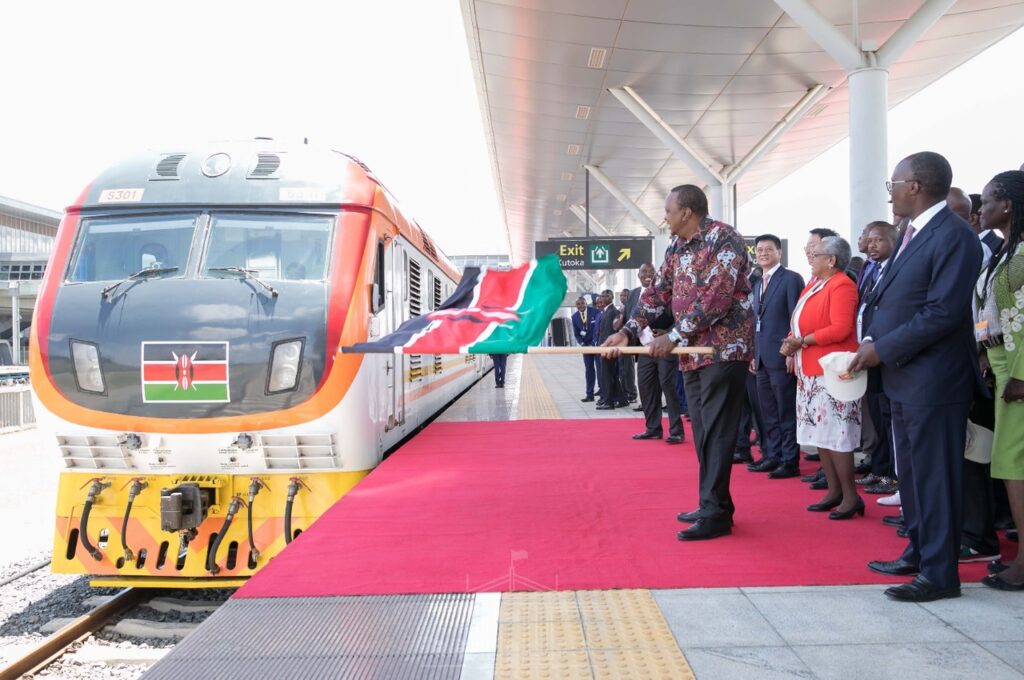Kenya SGR Project: Inside Kenya’s Powerful Railway Revolution
The Kenya SGR project stands as one of Africa’s most ambitious modern infrastructure ventures, a 472-kilometre railway connecting Mombasa to Nairobi and redefining the nation’s transport framework. Through advanced engineering, strategic funding, and regional integration, the Kenya Standard Gauge Railway has become a cornerstone of Kenya’s railway modernisation agenda, driving economic growth, industrialisation, and sustainable mobility across East Africa.
The Kenya SGR Project: Kenya’s New Age of Rail
The Kenya SGR project represents a paradigm shift in the nation’s transport infrastructure, transitioning from colonial-era metre-gauge systems to a modern, efficient, and internationally compliant standard-gauge line. Commissioned in 2017, the railway connects the Port of Mombasa to Nairobi, dramatically improving the movement of passengers and freight.
This initiative, under the Kenya Standard Gauge Railway (SGR) framework, is more than just a transport upgrade; it is a national development strategy that links Kenya’s Vision 2030 goals with regional trade aspirations within the East African Community (EAC). The Kenya SGR project remains one of the most outstanding construction projects in Kenya, symbolising a broader continental trend toward infrastructure-led economic transformation.
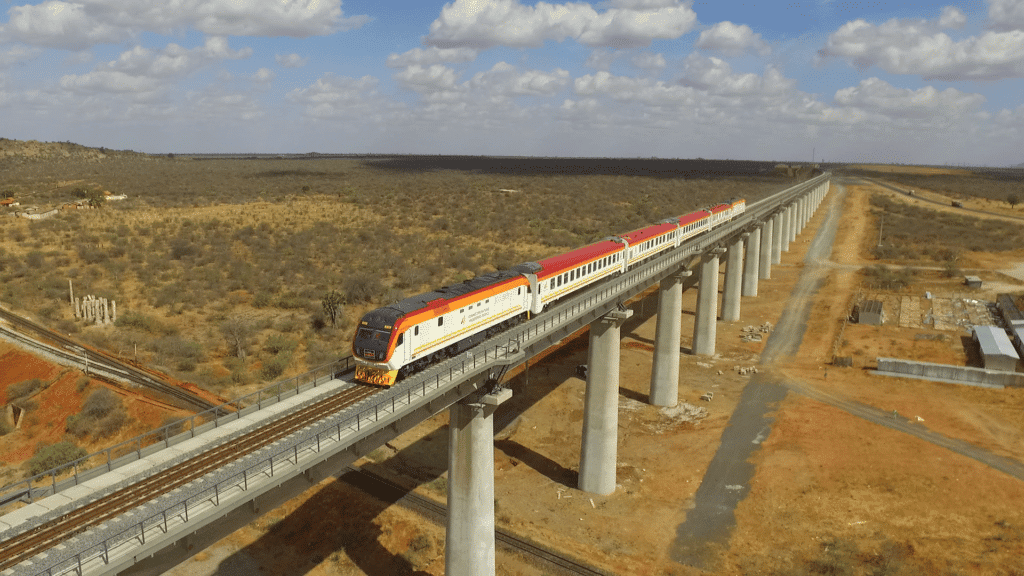
The Vision Behind the Kenya SGR Project
Kenya’s legacy railway, the British-era Uganda Railway, once served as the backbone of East Africa’s transport system. However, by the 2000s, it had become inefficient, with ageing infrastructure and limited freight capacity. To unlock new economic frontiers, the Kenyan government initiated the Kenya SGR project as part of the Northern Corridor Integration Projects, aiming to enhance connectivity from the Indian Ocean to landlocked countries, including Uganda, Rwanda, and South Sudan.
The Kenya Standard Gauge Railway was conceptualised to deliver higher speeds, greater axle loads, and reduced transit time between major cities. The Nairobi–Mombasa SGR became Phase 1 of this plan, a vital 472-km route designed to handle heavy freight and modern passenger services with world-class efficiency.
This vision positioned the SGR railway development as the foundation of Kenya’s broader transport revolution, linking ports, industrial zones, and logistics hubs into a single integrated system.
Construction and Engineering: Inside the SGR Development
The Kenya SGR project commenced construction in 2014 under the supervision of the Kenya Railways Corporation (KRC) and the main contractor, China Road and Bridge Corporation (CRBC). The design adhered to international railway standards, featuring a gauge width of 1,435 mm, ensuring compatibility with other standard-gauge systems worldwide.
By the end of 2025, the Kenya Railway Corporation (KRC) will assume complete management of the SGR under a management contract with Africa Star Railway Operation Company (Afristar). KRC has been progressively taking over operations from Afristar and learning how to operate the railway transport infrastructure.
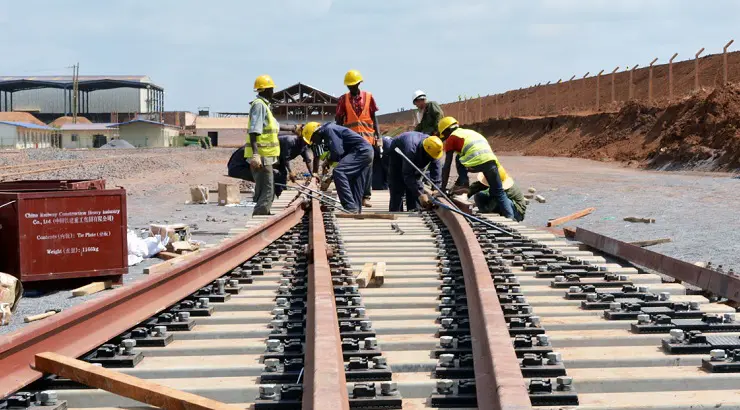
Technical Specifications
The Kenya Standard Gauge Railway uses a 1,435 mm gauge, steel rails, automatic block signalling, and ETCS-level 2 train protection systems.
Key design specs include:
- Route Length: 472 km (Mombasa–Nairobi Phase 1).
- Design Speed: 120 km/h for passenger trains, 80 km/h for freight.
- Track Type: Ballasted track with continuous welded rail.
- Axle Load Capacity: 25 tonnes.
- Stations: 33 in total, including Mombasa Terminus, Mtito Andei, Voi, and Nairobi Terminus.
- Bridge and Tunnel Works: 98 bridges and eight tunnels constructed using reinforced concrete and pre-stressed girders.
The SGR railway development incorporated advanced civil engineering and geotechnical solutions to navigate complex terrains, particularly through the Tsavo ecosystem and the Athi Plains. Environmental safeguards included wildlife underpasses and sound barriers to mitigate disturbance to protected habitats.
From an engineering standpoint, the Kenya SGR project set new national benchmarks in precision earthworks, quality control, and structural safety. The project utilised local materials where feasible, enhancing domestic industrial participation and skill transfer.
Route Sections of the Kenya SGR Project
The Kenya SGR project is divided into various construction phases and sections. They include:
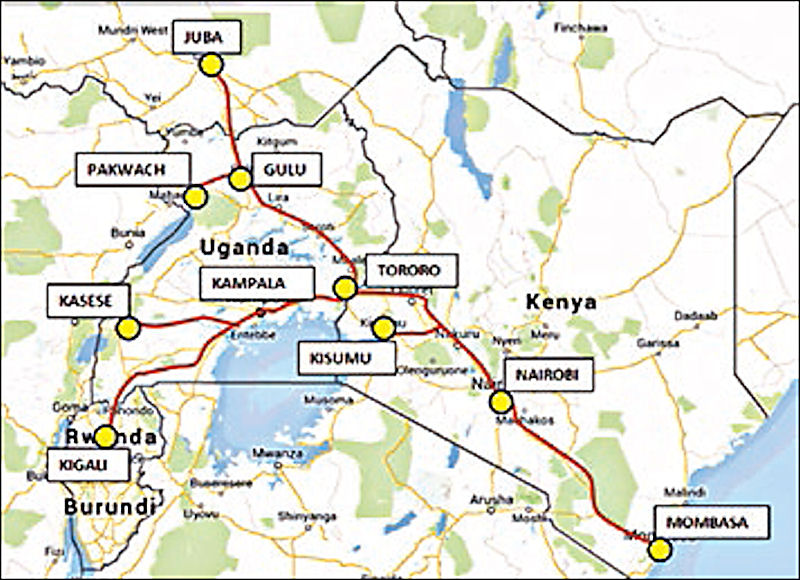
1. Mombasa–Nairobi Section
This 472 km link between Mombasa and Nairobi was the inaugural phase 1 of the Kenya SGR project. Construction began in October 2016 and concluded in January 2018, making it one of the most significant segments in Kenya’s railway modernisation efforts.
It replaced the old metre-gauge corridor with a modern standard-gauge line capable of higher speeds and heavier axle loads. The Kenya Standard Gauge Railway design allows for 120 km/h passenger and 80 km/h freight operations. Built by China Road and Bridge Corporation (CRBC), the financing model involved 90 % loans from the Export–Import Bank of China and 10 % Kenyan government funding.
This section forms the backbone of the Kenya SGR project and sets benchmark standards for engineering, safety systems, and logistics in Kenya’s transport revolution.
2. Nairobi–Naivasha Section
The Nairobi–Naivasha extension added roughly 120 km to the Kenya SGR project, for 150 billion (US$1.5 billion), opening for passenger services in October 2019.
This segment includes major intermodal facilities, including the Naivasha Inland Container Depot, linking the rail line with freight logistics. It plays a critical role in the region’s freight corridors and is part of the Kenya railway modernisation agenda.
3. Naivasha–Kisumu & Kisumu–Malaba Sections
Future phases of the Kenya SGR project extend from Naivasha to Kisumu (≈267 km) at an approximate cost of at a budgeted cost of KSh. 380 billion (US$3.8 billion) and then Kisumu to Malaba (≈135 km) on the Uganda border at a contract price of about KSh. 169 billion (US$1.69 billion).
These segments are central to Kenya’s goal of connecting to its landlocked neighbours, supporting regional integration and cross-border trade. They also represent outstanding construction projects in Kenya in terms of scale and ambition.
4. Lamu–Nakodok/Moyale Extensions
As part of the broader transport corridor initiative of the Lamu Port and Lamu-Southern Sudan-Ethiopia Transport Corridor (LAPSSET), the Kenya SGR project anticipates a section from Lamu to Nakodok (≈1,500 km) and Nairobi to Moyale (≈700 km) linking to Ethiopia and South Sudan.
These are critical to the Northern Corridor agenda, extending Kenya’s transport reach and reinforcing its status as a regional logistics hub.
Operational Segments and Intermodal Integration
The Kenya SGR project integrates multiple operational segments: passenger services (Madaraka Express), freight corridors, inland container depots, and logistics hubs.
For example:
- Freight trains from Mombasa to Nairobi and Naivasha link directly to port operations.
- Passenger stations in major towns increase connectivity and urban access. This intermodal design positions the Kenya SGR project at the centre of Kenya’s transport ecosystem, part of the broader SGR railway development and infrastructure expansion.
Funding the Dream: Kenya SGR Project Construction and Financing Model
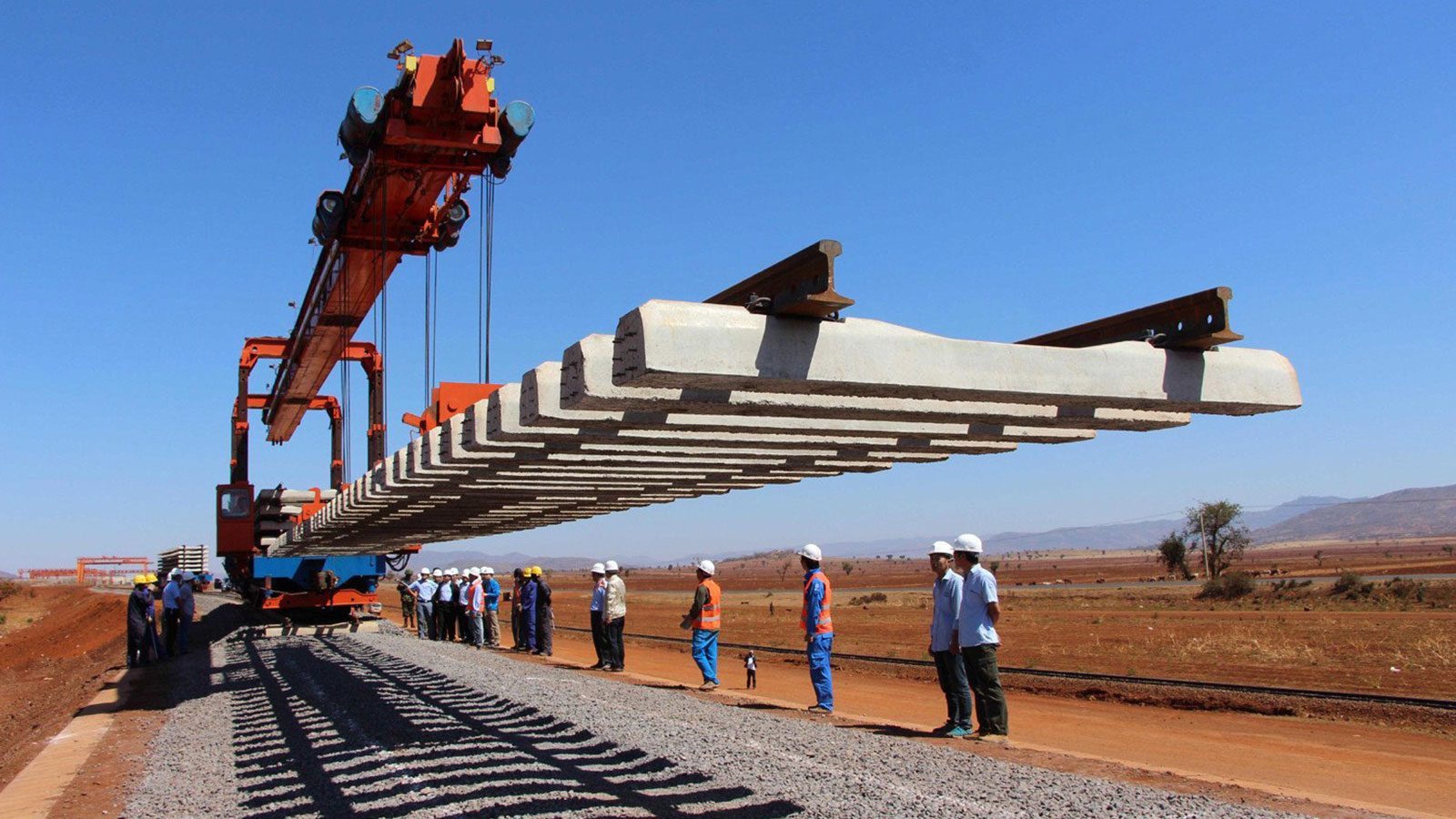
The Kenya SGR project construction and funding were primarily structured through a concessional loan agreement between the Government of Kenya and China’s Exim Bank, covering about 90% of the total cost. The total investment for the Nairobi–Mombasa segment amounted to approximately USD 3.6 billion, with the government contributing 10% of the remaining funds.
The financing framework included:
- Chinese Concessional Loan: USD 1.6 billion
- Commercial Loan: USD 1.8 billion
- Government of Kenya Contribution: USD 400 million
Repayment of the facility is supported by the Railway Development Levy (RDL), a charge on imports into Kenya aimed at sustaining infrastructure repayment and maintenance.
This financing model reflects a hybrid structure balancing public investment and external credit, a model replicated in subsequent African infrastructure projects. Despite debates on debt sustainability, the Kenya Standard Gauge Railway remains an asset generating tangible socio-economic returns and logistical efficiencies.
Key Milestones of the Kenya Standard Gauge Railway
The implementation of the Kenya SGR project unfolded through multiple structured phases:
| Phase | Route | Length (km) | Status |
| Phase 1 | Mombasa – Nairobi | 472 | Completed (2017) |
| Phase 2A | Nairobi – Naivasha | 120 | Completed (2019) |
| Phase 2B | Naivasha – Kisumu | 262 | Proposed |
| Phase 2C | Kisumu – Malaba | 107 | Planned |
Each milestone brought significant operational and logistical achievements. The Nairobi–Mombasa SGR now handles over 4.2 million tonnes of freight annually, reducing average cargo transit time from 48 hours to under 10 hours. Passenger services, branded Madaraka Express, have transported millions of travellers, providing an affordable and efficient alternative to road travel.
The Kenya railway modernisation process also includes linkages to the Inland Container Depot (ICD) in Nairobi and the Special Economic Zone (SEZ) in Naivasha, facilitating multimodal integration with road and pipeline networks.
Economic Benefits of the Kenya SGR Project
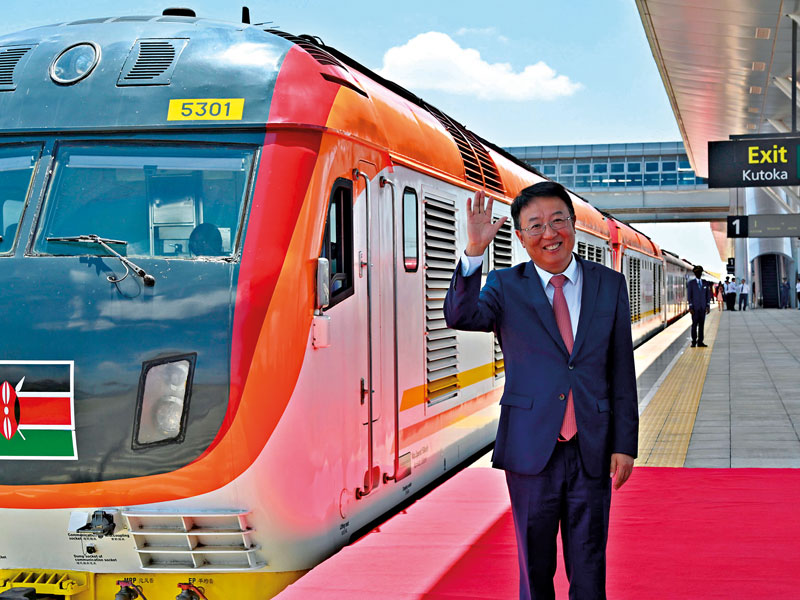
The economic benefits of the Kenya SGR project are profound and measurable across multiple sectors:
1. Trade and Logistics Efficiency
Cargo transport from Mombasa Port to Nairobi ICD has reduced logistics costs by nearly 40%, increasing competitiveness for importers and exporters.
2. Industrial and Employment Growth
The SGR railway development created over 30,000 direct and indirect jobs during construction, while local sourcing of materials stimulated domestic manufacturing and supply chains.
3. Decongestion of Roads
The shift of heavy freight from trucks to rail has alleviated traffic congestion along the Mombasa–Nairobi highway, enhancing safety and reducing road maintenance costs.
4. Regional Integration
As part of the Northern Corridor network, the Kenya Standard Gauge Railway strengthens Kenya’s role as a logistical hub for East and Central Africa.
5. Sustainability
Rail transport emits less CO₂ per tonne-kilometre compared to road freight, supporting Kenya’s low-carbon transport agenda.
The combined economic benefits of the Kenya SGR project validate it as a model for infrastructure-driven growth, creating a ripple effect across various sectors, including logistics, construction, tourism, and real estate.
How the Kenya SGR Project Is Transforming Trade and Logistics
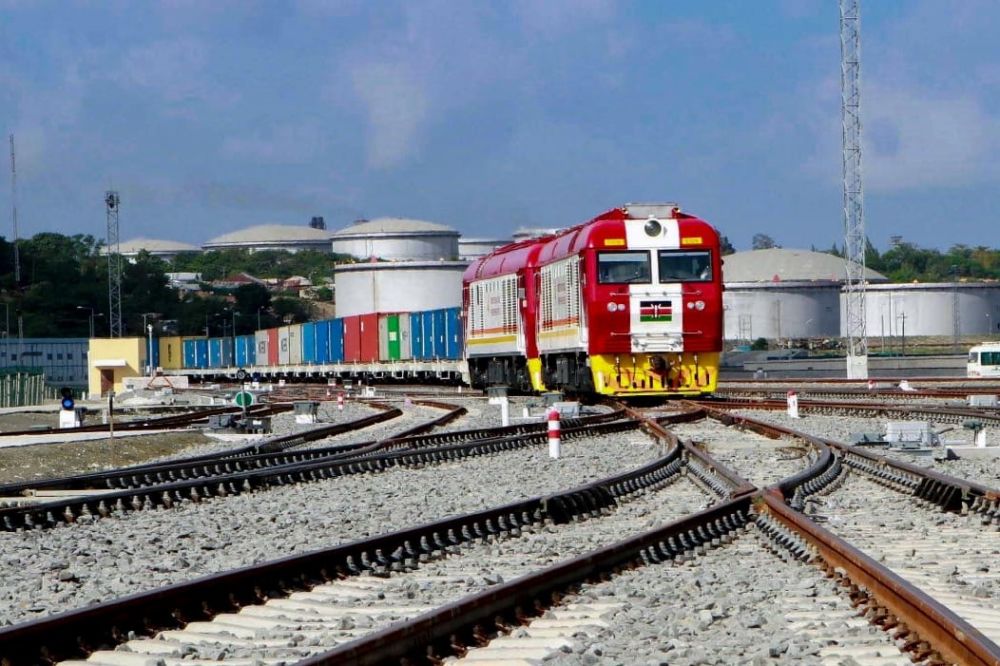
The Kenya SGR project has significantly transformed regional trade and logistics, redefining how goods move across East Africa. Through direct linkage to Mombasa Port’s container terminals, the SGR streamlines cargo clearance and inland distribution.
The establishment of Inland Container Depots (ICDs) in Nairobi and Naivasha has decentralised port operations, allowing efficient cargo clearance closer to industrial zones and reducing port congestion.
Additionally, the Nairobi–Mombasa SGR has catalysed investment in dry ports and logistics parks such as the Tatu City Logistics Park, promoting value-added industries. The integration with the Kenya Pipeline Company (KPC) and Kenya Ports Authority (KPA) ensures seamless intermodal connectivity.
From a technical operations standpoint, the SGR employs advanced signalling and communication systems, ensuring safety and real-time train tracking. Such systems align with international railway standards, reinforcing Kenya’s commitment to modern logistics infrastructure.
The Role of the SGR in Kenya’s Transport Revolution
The Kenya SGR project is not an isolated railway initiative; it forms part of a broader Kenyan railway modernisation master plan. The goal is to integrate rail, road, air, and port infrastructure into a single transport ecosystem.
The SGR railway development enhances connectivity between major economic corridors and supports the government’s industrialisation agenda. In the long term, integration with LAPSSET (Lamu Port–South Sudan–Ethiopia Transport) Corridor and the Meter Gauge Railway rehabilitation will create a multi-modal network linking coastal and inland economies.
The role of the SGR in Kenya’s transport revolution extends to improving cross-border trade efficiency, strengthening supply chain resilience, and promoting inclusive development. It demonstrates how infrastructure investment can catalyse national transformation through technology, engineering, and institutional capacity building.
Challenges and Lessons from the Kenya Standard Gauge Railway
Despite its success, the Kenya SGR project has faced challenges requiring adaptive solutions.
- Financial Sustainability: Concerns persist over the high cost of construction and debt servicing, highlighting the need for diversified funding and increased freight volumes to optimise revenue.
- Last-Mile Connectivity: Effective linkages between SGR terminals and manufacturing hubs remain critical for maximising economic impact.
- Institutional Efficiency: Harmonising policies between Kenya Railways, KPA, and KPC is essential for seamless operations.
- Environmental and Social Safeguards: Continuous monitoring is needed to ensure ecological protection and community benefit.
The lessons derived from the Kenya Standard Gauge Railway emphasise the importance of feasibility studies, governance transparency, and long-term asset management in major infrastructure undertakings.
The Future: Nairobi-Naivasha-Kisumu and Beyond
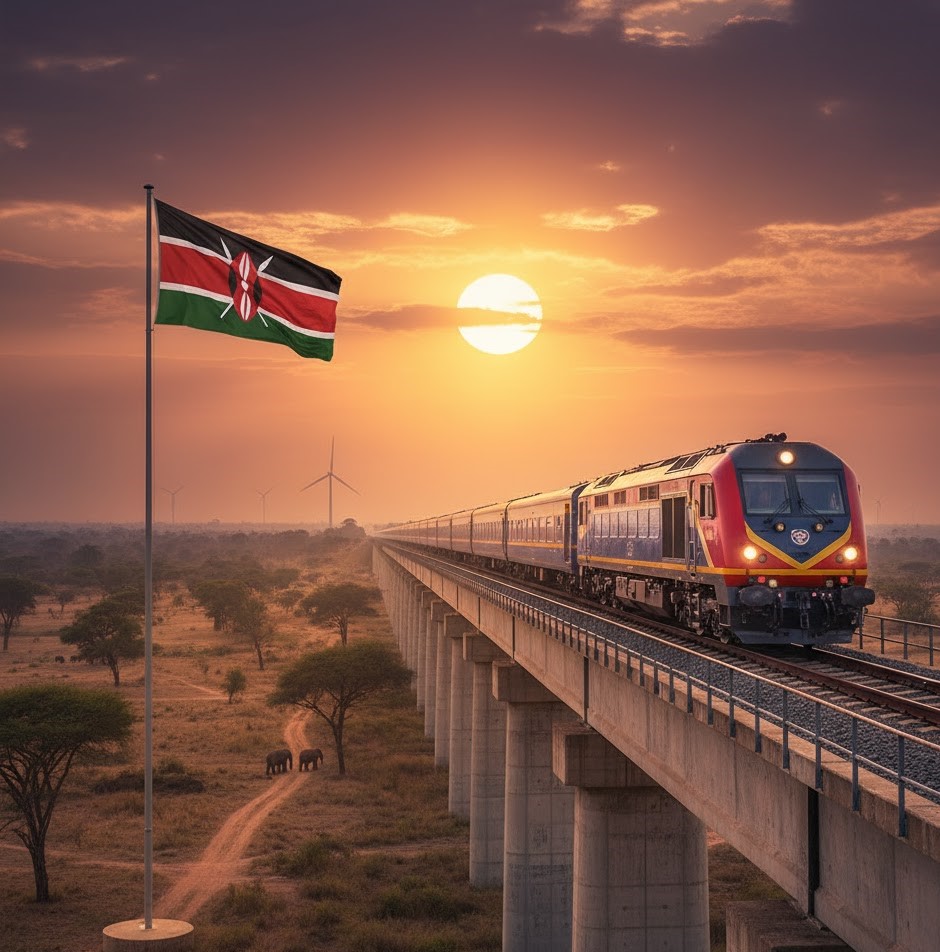
The following chapters of the Kenya SGR project include extensions from Naivasha to Kisumu, Malaba, and ultimately to Uganda’s SGR network. These connections are expected to transform the Great Lakes trade corridor and enable a unified East African railway system.
Future phases will integrate modern freight terminals, high-capacity passenger services, and digital rail operations. As part of Kenya’s railway modernisation, these expansions are poised to reduce logistics costs further, attract regional investment, and enhance Kenya’s geopolitical position as a logistics leader.
Sustainability remains a key design principle, with future works expected to incorporate renewable energy for station operations, smart ticketing systems, and automated train control technology.
Conclusion: The Steel Path to Progress
The Kenya SGR project exemplifies a strategic leap in infrastructure engineering and transport planning. It is not merely a railway; it is an enabler of industrialisation, urban expansion, and regional cooperation.
Through the Kenya Standard Gauge Railway, the nation has demonstrated how well-executed engineering, structured financing, and visionary policy can converge to deliver transformative results. The continued evolution of this system will define the next era of Kenya’s transport revolution, setting benchmarks for sustainable, technology-driven growth across Africa.
Call to Action: Be Part of Africa’s Infrastructure Transformation
Stay informed about groundbreaking infrastructure and engineering projects that are reshaping Africa. Explore in-depth analyses, project reports, and construction insights only on ConstructionFrontier.com, your trusted source for credible construction intelligence.

